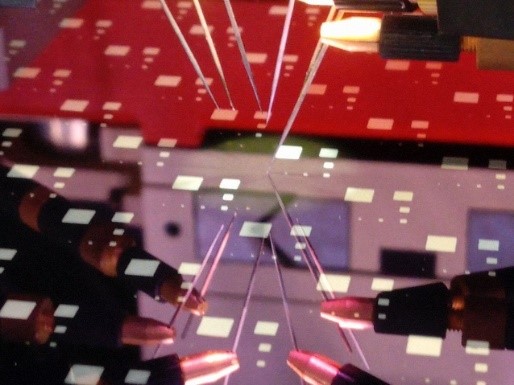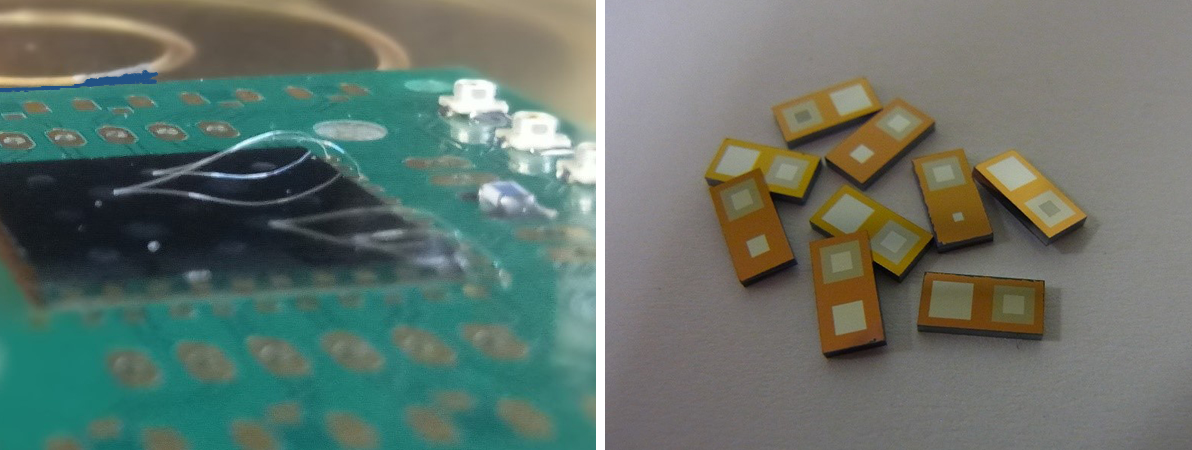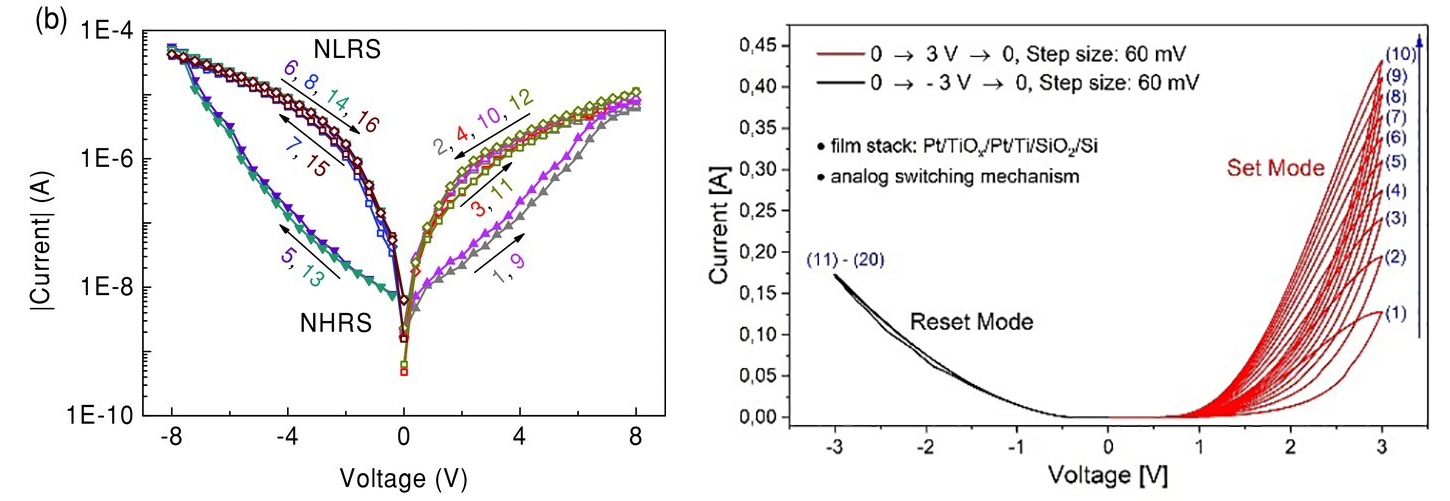


The topic "Memristive Devices" deals with the fabrication, integration and characterization of memristors for non-volatile memory applications. In the broadest sense, a memristor is an electrical resistor that changes non-volatile as a function of time and the applied voltage. A distinction is made between memristors with digital switching behavior, which can be switched between a high and low resistance state, and analog components, which change their internal resistance continuously with time (memristivity). By applying a voltage with reversed polarity, the memristor can be reset accordingly.
Due to their inherent biorealism, memristive devices are particularly well suited for technically reproducing components of the brain and nervous system. One of their main applications is therefore the construction of technical neural networks for the hardware-based realization of artificial intelligence. Other fields of application are high-density memories based on nanoionic redox processes, so-called ReRAMS, and zero-energy sensors in combination with charge-generating physical converters.
Fraunhofer ENAS has been working in the field of memristive devices for many years and has already transferred some of these devices into application, fig. 1 and 2. One of the focal points was the production of zero-energy sensors, which are realized by means of a combination of piezoelectric transducer and memristor, fig. 3. Thereby, the piezoelectric transducer provides sufficient energy to write the memristor when shocks and vibrations occur. By means of a special RFID-based wireless interface, the sensors are read out and reset. Another focus is neuromorphic computing using memristive synapses. Using our special, patented BiFeO3 technology, synaptic circuits with very low power dissipation, high performance and very good signal-to-noise ratio can be implemented. The memristors are available as single devices as well as memristive cross-bar arrays, Fig. 4. First investigations on the integration On Top on CMOS are already in progress.
 Fraunhofer Institute for Electronic Nano Systems
Fraunhofer Institute for Electronic Nano Systems
